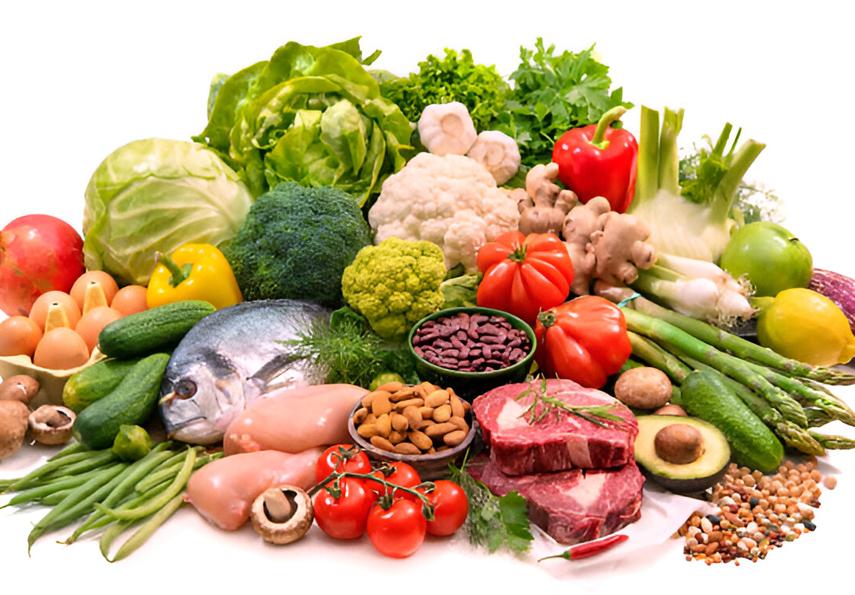
Harvest Time
1 year
Mixed Vegetables
ROI
3.00% - 6.00%
Cost Per Unit
৳10,000.00 BDT
Invest End Date
31 Jan, 2026
Project Overview
1)As this is a Murabaha contract (Buy-Sell), there is no opportunity for investors to exit in case of emergencies. We will purchase the vegetables and sell them to Grow Up enlisted Merchants. Therefore, we cannot refund your investment before the project concludes.
2) Duration of Investment
The total investment amount will be - 96,57,000/=
This investment will be for 1 Month.
3) Projected ROI(Return of Investment)
The return on investment (ROI) will be 33% annually. In one (1) month, the investor will receive a halal dividend of 2.75% (excluding service charges).
4) Investment Part
Here, the minimum investment would be 7,400 TK, or investors can invest up to the project limit. Halal dividends will be disbursed every month.
For example, if someone invests 100,000 TK (one lakh taka), they will receive 1,33,000 TK, excluding service charges (100,000 TK as the investment part and 33,000 TK as the profit part in a year).
5) Loss Sharing
Grow Up is a Shariah-compliant project, and according to the Murabaha principle, investors bear no responsibility for any business losses after transferring the liability to the Grow Up authority for purchasing and selling various kinds of vegetables to enlisted merchants. If Losses occur after handing over the vegetables, it will be to the agent/merchant. Consequently, there will be no loss sharing from the business after the Mixed vegetables are handed over to the merchant.
6) Service Charge
Grow Up will apply a 5% service charge on investors' profit. It should be noted that all of the mentioned ROI above are provided after excluding this service charge.
7) Contract Conditions
Investors will engage in a Murabaha Agreement (production-sale) contract with Grow Up for the Mixed Vegetables Project. It involves a "buy-and-sell" process, where investors will initially invest in purchasing Mixed Vegetables through the Grow Up Authority and ensure their sale through the Grow Up marketing team.
Grow Up will act as an agent for the investors, handling the procurement of Mixed Vegetables, assuming ownership and risk of asset possession on behalf of investors, and subsequently selling them to enlisted merchants.
The merchants have agreed to purchase the products at a 45% markup on the actual cost of procuring the product.
8) Risk Factor
According to our calculations, although the risk factor stands at 4%, the GrowUp Gorud Expert team is confident in their ability to mitigate and manage these risks effectively, as outlined previously.
9) Payment Delay
Grow Up has conducted an in-house analysis of the projected returns of the business and expects to be able to repay on time, barring any unforeseen risk factors.
10) Security
Grow Up provides the following documents to investors:
- Contract Deed (300 tk Stamp)
- Security cheque
- Money Receipt
- Copy of Authorized deed
Project About
Mixed Vegetables: A Nutritious Delight
Introduction
Mixed vegetables are a combination of various vegetables that are cooked or served together, often as a side dish or in salads and stir-fries. They represent a colorful and nutritious blend, offering a plethora of vitamins, minerals, and fibers essential for a healthy diet. In this article, we will explore the benefits of mixed vegetables, popular combinations, cooking methods, and how to incorporate them into your meals effectively.
Nutritional Benefits of Mixed Vegetables
Rich in Vitamins and Minerals: Mixed vegetables are an excellent source of essential vitamins and minerals, including Vitamin A, C, K, potassium, and folate. These nutrients support overall health, enhance immune function, and promote skin and eye health.
High in Fiber: Consuming mixed vegetables contributes a significant amount of dietary fiber, which aids in digestion, helps maintain gut health, and regulates blood sugar levels. Fiber also promotes a feeling of fullness, which can assist in weight management.
Low in Calories: Most mixed vegetables are low in calories, making them an ideal choice for anyone looking to maintain or lose weight. They provide volume in meals without adding excess calories.
Antioxidant Properties: Many colorful vegetables contain antioxidants that help combat oxidative stress and inflammation in the body. These compounds play a role in reducing the risk of chronic diseases, such as heart disease and cancer.
Popular Combinations of Mixed Vegetables
Mixed vegetables can include a variety of ingredients depending on seasonal availability, regional preferences, and the intended dish. Here are some popular combinations:
Stir-Fried Mixed Vegetables:
- Ingredients: Bell peppers, broccoli, carrots, snow peas, and baby corn.
- Preparation: Sauté the vegetables with garlic, ginger, and a splash of soy sauce for a quick and flavorful dish.
Vegetable Medley for Roasting:
- Ingredients: Zucchini, squash, bell peppers, onions, and cherry tomatoes.
- Preparation: Toss the vegetables with olive oil, salt, and herbs, then roast at 400°F (200°C) until tender and caramelized.
Classic Mixed Vegetable Salad:
- Ingredients: Lettuce, cucumbers, tomatoes, radishes, and shredded carrots.
- Preparation: Combine the fresh vegetables with a vinaigrette for a refreshing salad.
Frozen Mixed Vegetables:
- Ingredients: A combination of green beans, corn, peas, and carrots.
- Preparation: Conveniently used in soups, casseroles, or as a side dish when fresh vegetables are not available.
Veggie Soup:
- Ingredients: Carrots, celery, potatoes, green beans, and spinach.
- Preparation: Simmer the vegetables in vegetable broth with herbs for a hearty, comforting soup.
Cooking Methods for Mixed Vegetables
There are various cooking methods to prepare mixed vegetables, each preserving different flavors and textures. Some popular methods include:
Steaming: This method preserves most nutrients and flavors while keeping vegetables tender-crisp. Steaming is ideal for broccoli, carrots, and snap peas.
Sautéing: Cooking mixed vegetables in a small amount of oil over medium-high heat enhances their natural flavors. This method is perfect for quick stir-fries.
Roasting: This cooking method caramelizes the natural sugars in vegetables, enhancing their sweetness. Roasting can bring out the best flavor and texture in root vegetables.
Boiling: While boiling is common, it can lead to nutrient loss. This method is best for soups where the broth can capture the nutrients.
Grilling: Grilling adds a smoky flavor and attractive grill marks on vegetables like zucchini and bell peppers.
Tips for Choosing and Storing Mixed Vegetables
Choose Fresh Seasonal Produce: Whenever possible, select seasonal vegetables for the best flavor and nutritional value. Look for vibrant colors and firm textures.
Opt for Organic: If you are concerned about pesticide exposure, consider choosing organic vegetables, especially for those items known to retain pesticides.
Storage: Most mixed vegetables can be stored in the refrigerator for a few days. Wash and dry vegetables before storing to prevent mold growth. For longer storage, consider freezing fresh vegetables.
Pre-cut Convenience: If time is short, consider purchasing pre-cut mixed vegetables. However, be sure to check the packaging for freshness and any added preservatives.
How to Incorporate Mixed Vegetables into Your Diet
Add to Breakfast: Incorporate mixed vegetables into omelets, frittatas, or breakfast burritos for a nutritious start to your day.
Lunch Salads: Use mixed vegetables as a topping for salads or in grain bowls. Quinoa or farro paired with roasted mixed vegetables makes for a satisfying meal.
Snacks: Raw mixed vegetables can be cut and served with hummus or yogurt dip for a healthy snack option.
Dinner Side Dishes: Serve mixed vegetables alongside grilled meats, fish, or a main course for your dinner plate. A colorful presentation makes meals more appetizing.
Soups and Stews: Add mixed vegetables to soups and stews to enhance flavor and nutrition. They can be tossed in during cooking or added towards the end.





